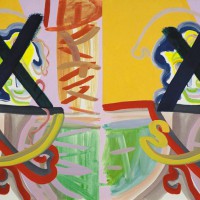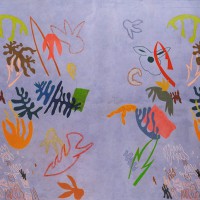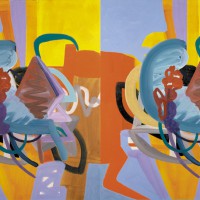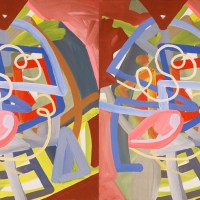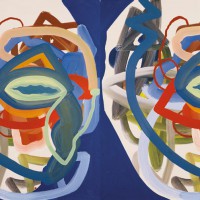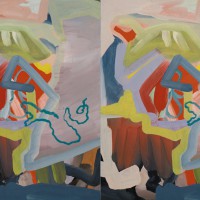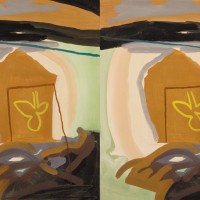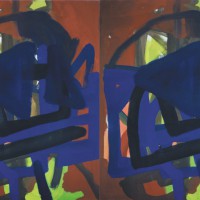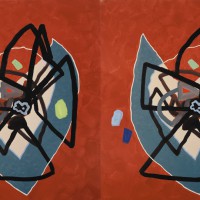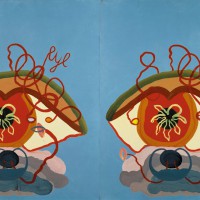stereopictures
Let the eye see
what it wants to see
In the fall of 1968, during a trip to London, I discovered a Victorian 3-D instrument (from Holnes) in an antique shop, complete with the postcards that went along with it.
The deep spatial effect produced by the photos taken in English colonial times – all made with a stereo camera – awoke a desire to experiment with such stereoscopic images (spatially oriented on one surface) myself. Around 1971, I got to know the Swiss artist Alfons Schilling in New York. At that time he was already doing photography work using stereo photos and lens grids. I picked up a good deal of knowledge about spatial visions from him.
Back in Austria, I slowly began to free myself from the hand-colored 3-D photo canvas. The rebuilding of a pantograph in 1975 allowed for the first abstractly drawn 3-D pictures in the world. Various sorts of visual devices were developed to hold up in front of the eyes for viewing such pictures – 3-D slide shows – exhibitions – paintings for 1-2 eyes – etc.
25 years’ involvement with spatial pictures met with an abrupt end when both my eyes began to suffer from cataract clouding in 1995-1997. In 1998 and 1999 I underwent successful eye surgery, and now I can see quite well again. In the last years I have returned to producing pictures which are viewed “normally”, since one thing is certain: the painter must transfer the 3-dimensional world of objects into the 2-dimensional world of the canvas.
Converting three into two dimensions has once again become a magical experience for me, during which for a fleeting moment I try to grasp that fourth dimension which my whole being yearns to find.

